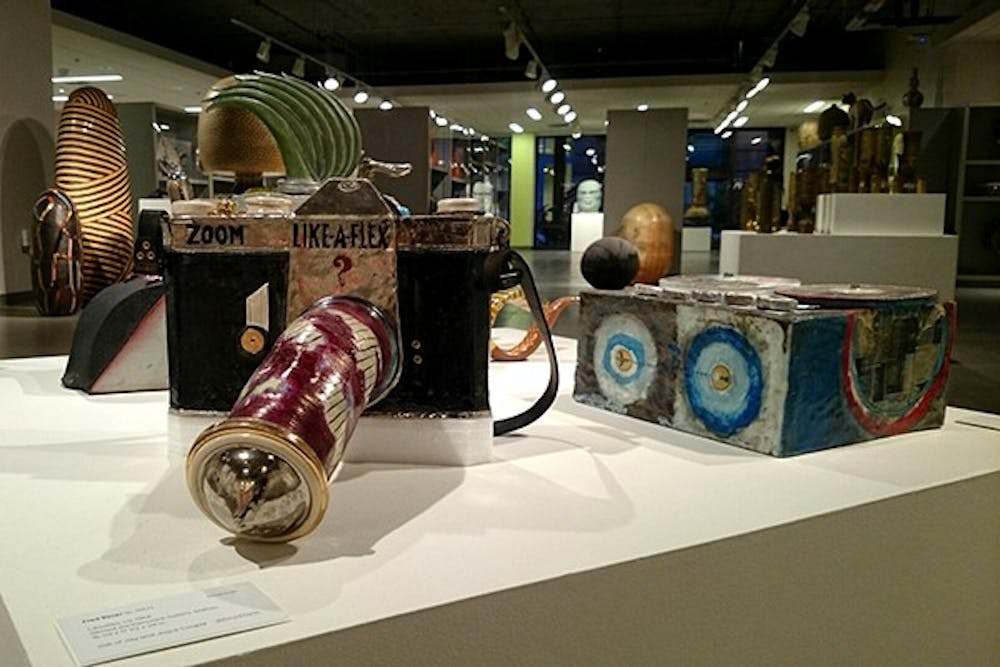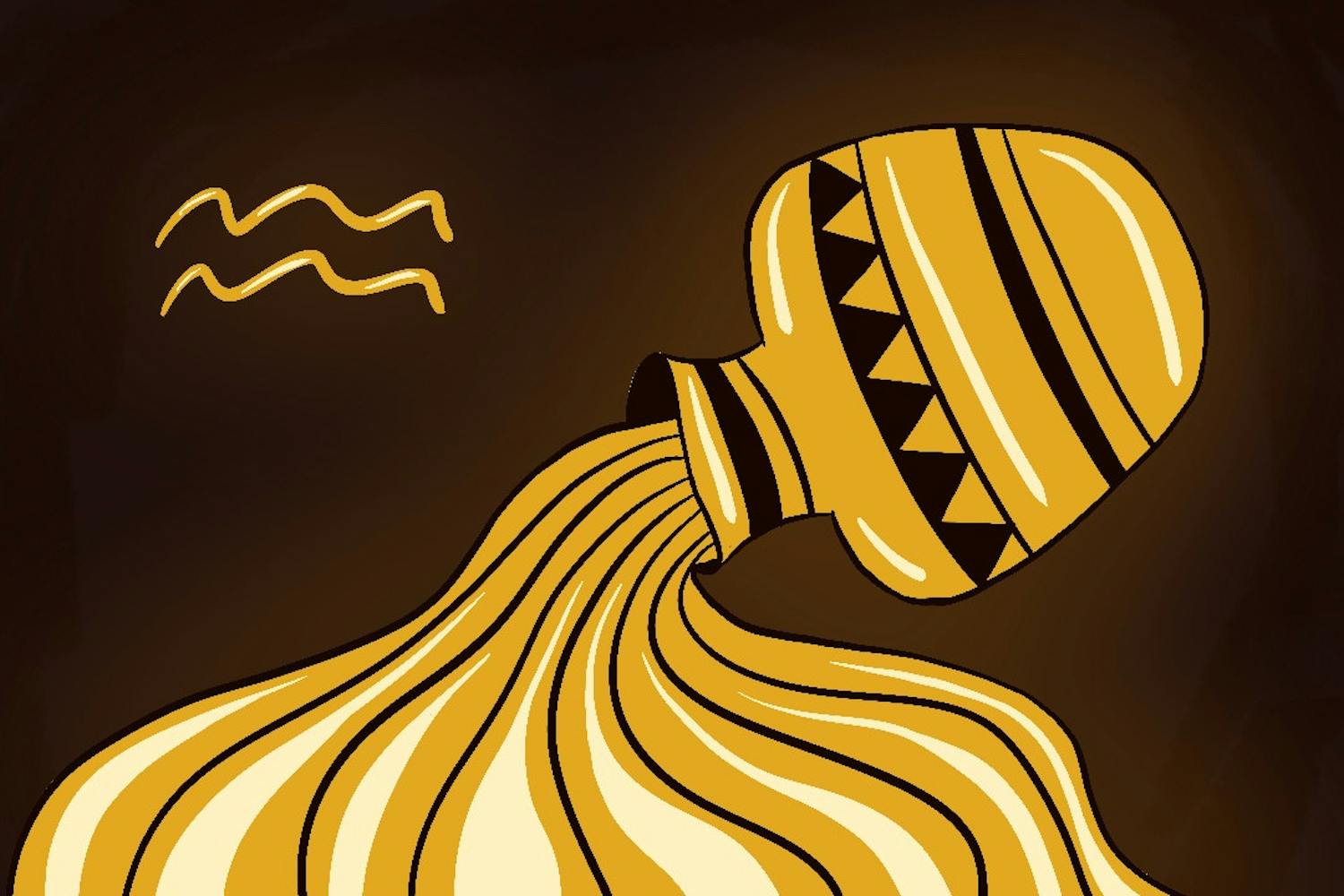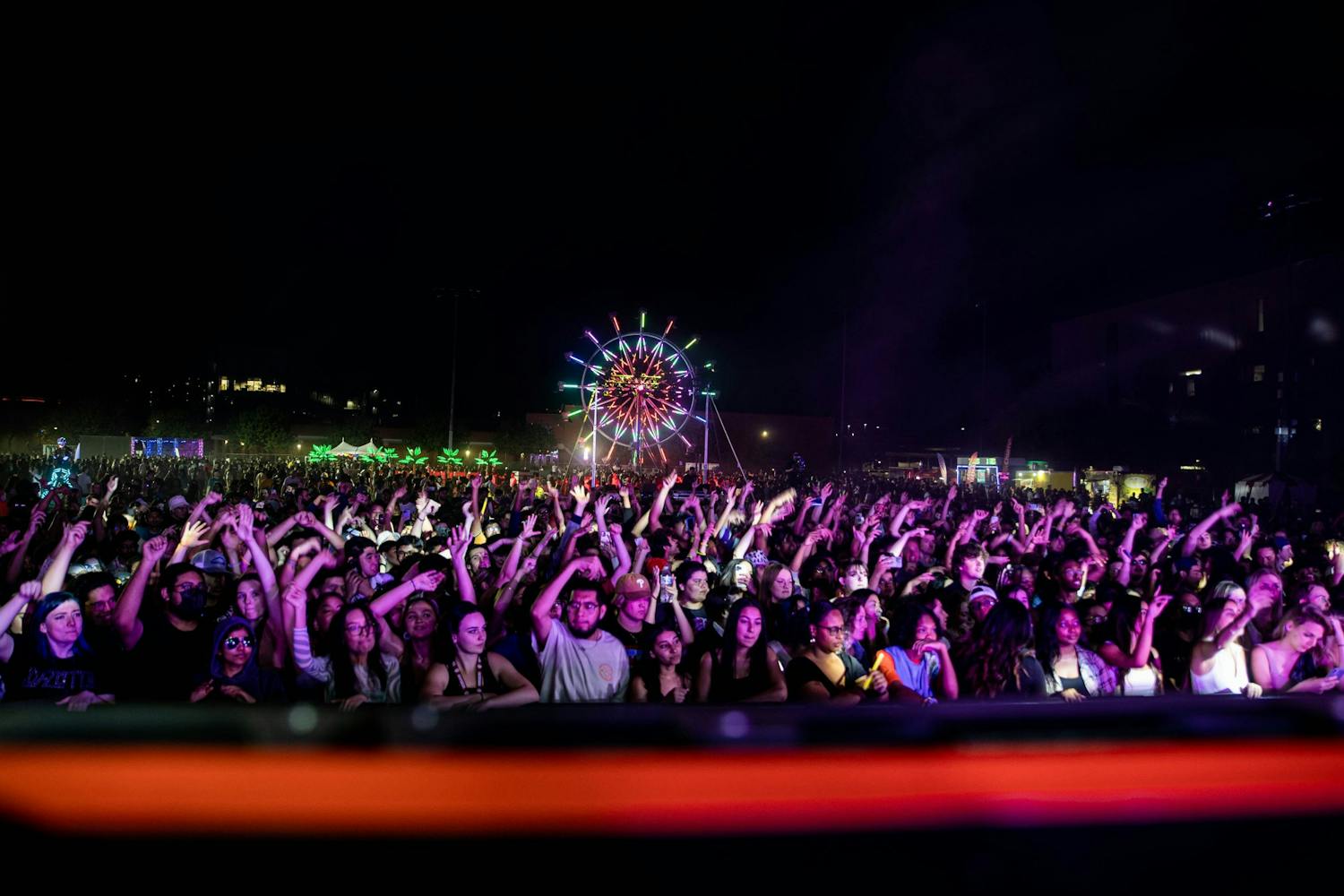 "Firey", 2009 a gift of David Charan displayed at the "These Are Some of my Favorite Things" art gallery At ASU Brickyard Museum. (Photo by Stephanie Specht)
"Firey", 2009 a gift of David Charan displayed at the "These Are Some of my Favorite Things" art gallery At ASU Brickyard Museum. (Photo by Stephanie Specht)From funk machines to odd statues, artillery shells to a classic Beatles record, there is a lot to see down at ASU’s Brickyard Art Museum.
Showing a wide variety of trinkets and objects from around the world, "These are Some of My Favorite Things" is a show dedicated to collections that range from the unconventional to the beautiful. They havecome together in the new Brickyard Art Museum, a wide open and beautiful spot that sports a TARDIS-like “bigger on the inside” quality, contrasting with its smaller exterior.
The pieces on display have many stories to tell. A set of Mexican folk art sits in the back, near a large kabuki mask from Japan and ethnic artifacts from Africa. In the middle, an eccentric oversized ceramic camera rests next to a creation simply named, the “Funk Machine,” reminiscent of the “funk ceramics” era of the late 1960s and '70s. Some of the items have even been discovered in thrift stores and yard sales.
"Favorite Things" is the last show to be curated by Peter Held, who retired in late July after 11 years with the museum. During a tour of the gallery, he said that the articles on display were created by those “who don't necessarily perceive themselves as artists.”
“They're everyday people that have an inclination to work with their hands and their mind, and (they) make beautiful objects,” he said
 "Nativity scene", a late 1980 piece from the Kathleen Vanesian Collection displayed at the "These are Some of my Favorite Things" art gallery at ASU Brickyard Museum. (Photo by Stephanie Specht)
"Nativity scene", a late 1980 piece from the Kathleen Vanesian Collection displayed at the "These are Some of my Favorite Things" art gallery at ASU Brickyard Museum. (Photo by Stephanie Specht)
Some of those objects were a 28-piece set of spent World War I shell casings with embossed and engraved designs ranging from knights on horseback to floral decorations. In a statement posted at the gallery, collectors Randall and Katherine Schmidt said that while some of the shells are “trench art” designed by soldiers in battle, many of them were made into vases by people of destroyed towns near the battlefields. The collection started in 1970 and was born out of an interest in "how mankind's spirit and creativity were able to repurpose instruments of death and destruction into objects of use and beauty," according to the artist statement.
On a wall, a set of handcrafted sticks hang, fashioned into objects such as a large pencil or adorned with miniature trinkets and pieces found in the wild. These come from professor Mark Klett, who began making them in 1998 as part of the “Sunrise Stick Game," a creative way to settle arguments between friends about where the sun would rise as they hiked across the West.
“At night a stick is placed in the center of a circle of about 6 feet in diameter that has been scraped in the ground,” Klett said in his statement. Players would then place a marker where they believed the shadow of the stick would land in the morning.
Pulling from his youth and journeys, professor Kurt Weiser displays a small cabinet filled with childhood items and objects from his travels to places such as Thailand. In it, he shows off random items such as his silver baby cup and an old Beatles record. In his statement, he says there is no rhyme or reason to his collecting, and that he collects what is visually appealing.
 Various sculptures, including Michael Corney's "Uncle Sam Teapot", are displayed at the "These are Some of my Favorite Things" art gallery At ASU Brickyard Museum. (Photo by Stephanie Specht)
Various sculptures, including Michael Corney's "Uncle Sam Teapot", are displayed at the "These are Some of my Favorite Things" art gallery At ASU Brickyard Museum. (Photo by Stephanie Specht)
“Bird's nests and petrified wood found in the desert, a shaving cream brush ... they make no rational sense, other than that they are memories I have,” he said.
Held said the more the collectors collect, “the more they self-educate and gain a deeper knowledge of the materials, and how things were made, how they were used and what ever culture they were created in.”
 "Likeaflex", a piece from 1968 by Fred Bauer, gift of Jay and Joyce Cooper, is displayed at the "These are Some of my Favorite Things" art gallery At ASU Brickyard Museum. (Photo by Stephanie Specht)
"Likeaflex", a piece from 1968 by Fred Bauer, gift of Jay and Joyce Cooper, is displayed at the "These are Some of my Favorite Things" art gallery At ASU Brickyard Museum. (Photo by Stephanie Specht)
He said the overriding theme of the gallery is the passion behind collecting objects, as the collectors come from different perspectives. “Depending on who they are, any childhood experience might have informed what they still collect today after 30, 40, 50 years,” he said.
The gallery is open to students and the public at no cost and will run until Oct. 4.
Reach the reporter at Damion.Julien-Rohman@asu.edu or follow him on Twitter @legendpenguin
Like The State Press on Facebook and follow @statepress on Twitter.




